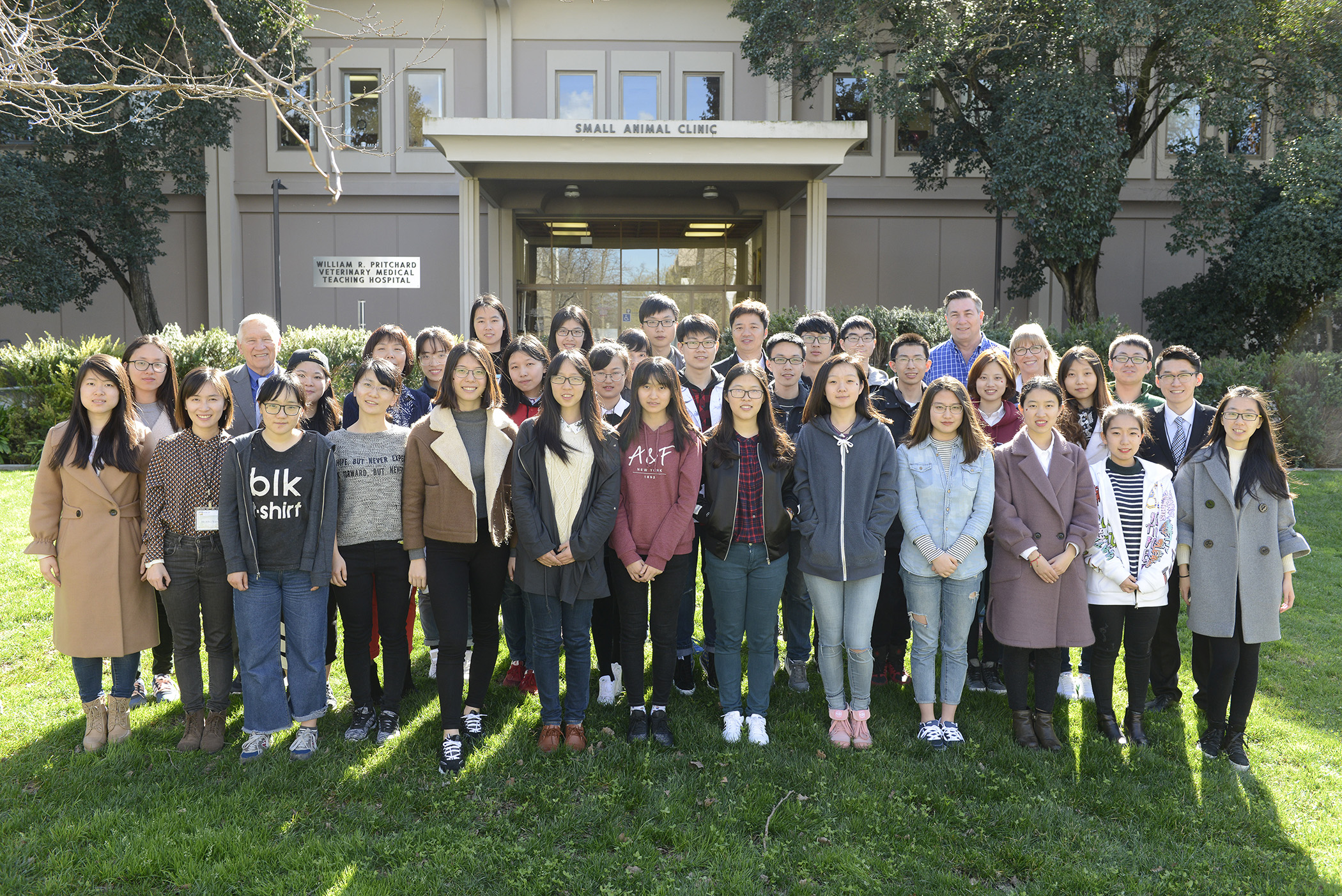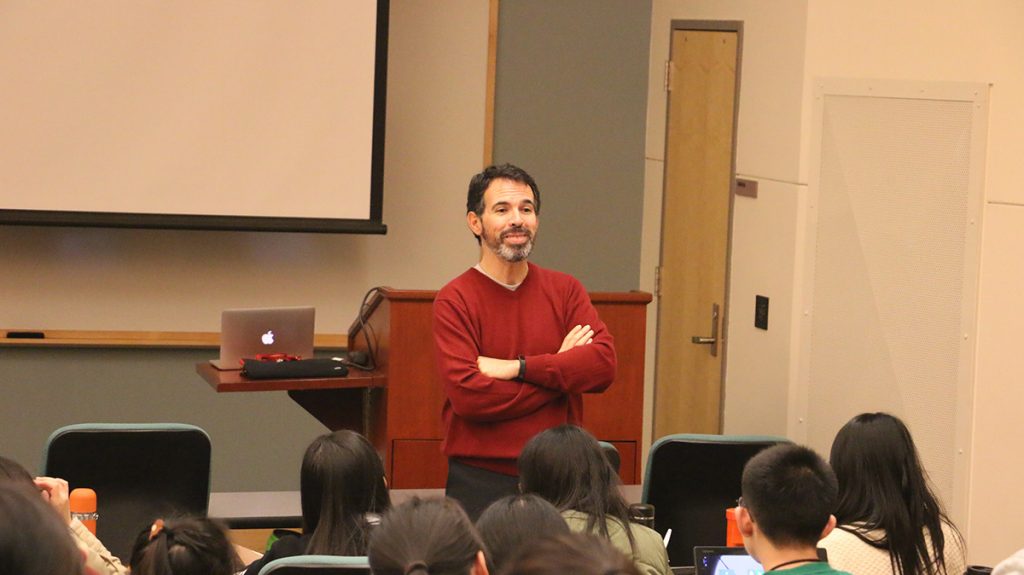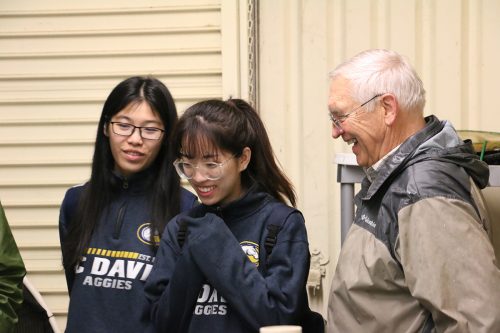Lighting a Fire for One Health Education
By Chris Brunner, March 8, 2017

The student gave the teacher a small piece of paper. The handwritten note expressed her thanks for educating her about the link between people, animals, and the environment, which lit a fire in her about One Health.
Twenty-seven undergraduate students from Nanjing Agricultural University (NAU) attended the January 23 – February 10, 2017 NAU-UC Davis Graduate Education Conference on One Health and learned about everything from microbes to human health. The three week conference presented the opportunity for students to understand that they can participate in making changes to environmental and foodsafety problems.
We have educated hundreds of students through our student conferences. We bring experts together from the School of Veterinary Medicine, College of Agricultural and Environmental Sciences, School of Medicine, and College of Biological Sciences, at UC Davis, to speak with students and faculty from China about the One Health concept. The conferences are a comprehensive undertaking of instruction highlighting environmental sources of soils, water, and air, as the essential basis for all ingredients necessary for foods for plants, animals, and people.

Lectures, combined with hands-on field trips, help students connect the dots between people, animals, and the environment. For example, our most recent conference included a visit to the Veterinary Medicine Teaching and Research Center in Tulare, where the students toured a Central Valley dairy facility and learned firsthand about farming operations. They had the opportunity to visit Ruiz Foods where they were informed about the food safety programs in a processing facility. Their trip to Foster Farms headquarters provided insight into the importance of poultry health as it relates to the food system. Additionally, Ronald Bond, a water quality researcher with UC Davis, instructed students about water contamination and food safety, when they practiced testing water, as seen in the following video.
Raising awareness about the link between people, animals, and the environment, as we do in our conferences, is the first step in lighting the fire of One Health and its importance in improving food safety from the soil to the consumer. The One Health approach is rooted in the knowledge that the health of humans, animals, and the environment are linked, and it is key to solving complex problems that arise at the interface of these groups. Unraveling foodborne illness outbreaks involves experts including water quality scientists, veterinarians, epidemiologists, microbiologists, toxicologists, plant scientists, soil scientists, and public health officials.
Today, food is the cause of 600 million illnesses each year worldwide, or 1 in 10 people. Of those who fall ill from a foodborne disease, it is estimated that 420,000 will die, including 125,000 children. This is the burden of foodborne diseases caused by 31 agents including bacteria, viruses, parasites, toxins and chemicals states the World Health Organization.
Consider the food on your plate. How many steps along the way from the soil to the table could your food be exposed to a contaminant? For example, eating raw produce contaminated with bacterial, parasitic, or viral pathogens can be the cause of a foodborne illness outbreak. Wildlife may play a significant role in microbial contamination of pre-harvest produce. Feces from birds foraging along rows of produce or rodents setting up house in fields are a potential risk of contamination. There are several ways to enable microbial transfer from wildlife feces to produce. The conferences highlight where contamination can occur. With this awareness students can realize how their field of study can be applied to prevent contamination from occurring at any step along the chain.

Dr. Osburn enjoys participation with students during their visit to the Center for Aquatic Biology and Aquaculture.
Dr. Bennie Osburn, Director of Outreach and Training at WIFSS, said, “The take away from our conferences is how well the students grasp a broader concept of One Health and an understanding of the influence of people on disrupting the environment, leading to human and animal diseases.”
Team building exercises lead to a synergism to address multiple environmental and food safety issues using a One Health approach. As with past conferences, students returned home from the winter conference with a fire to join the NAU One Health Club. They will continue working together on issues of concern, with the knowledge that change begins with them.
“We brought together students from different disciplines and it demonstrated the power of multi-disciplinary teams working together to address future challenges for the health of people, animals and the environment,” Osburn explains.
W.B. Yeats once said, “Education is not the filling of a pail, but the lighting of a fire.” Our conferences are lighting a fire for One Health education.
